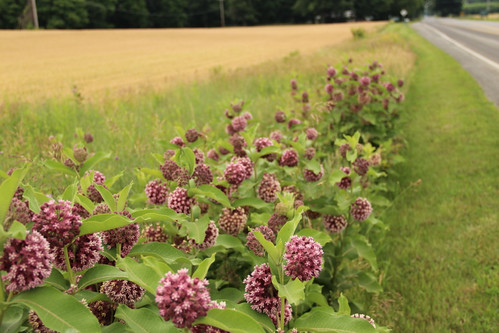
No matter where you grew up, you are likely familiar with monarch butterflies. You may have childhood memories from science class when you watched those peculiar green caterpillars transform into beautiful butterflies. Depending on where you live, you may have seen masses of their orange-and-black wings fluttering in the sky while the butterflies were on their annual cross-country migratory journey.
Today, the iconic monarch butterfly is under pressure. Habitat loss has led to a steady decrease in their numbers.
We’re working to reverse that trend. This year, USDA’s Natural Resources Conservation Service (NRCS) is launching a targeted effort in ten key states to create and enhance habitat for the iconic monarch on private lands. Through this effort, we’re partnering with farmers and ranchers to voluntarily establish habitat for the monarch on working lands while ensuring America’s farms and ranches stay productive.
Because monarch butterflies are often on the move, they need to have the right plants at the right time along their migration route, including milkweed, which is the sole food source for monarch caterpillars. We worked with butterfly experts across the United States to choose the best plant species for monarchs based on geographic location and value to monarchs.
We’re focusing efforts in the southern Great Plains and Midwest – two regions at the heart of the monarch’s migration. In the southern Great Plains, our work will focus on rangelands and ways to improve the health of pastures so they provide good forage for livestock and food for monarchs. In the Midwest we’re focusing on integrating plantings into croplands and making improvements to wetland areas.
We’re looking for private landowners in Illinois, Indiana, Iowa, Kansas, Minnesota, Missouri, Ohio, Oklahoma, Texas and Wisconsin who are interested in making monarch-friendly improvements to their land. These efforts not only benefit butterflies, they also strengthen agricultural operations, support other beneficial insects and wildlife and improve our natural resources.
When we designed this effort, we pulled together a variety of tools from the 2014 Farm Bill toolbox. In fiscal year 2016, we’re making available $2 million through the Environmental Quality Incentives Program (EQIP) and $2 million through the former Wetlands Reserve Program for existing wetland easements. Additionally, we created new enhancements through the Conservation Stewardship Program (CSP) to establish monarch habitat. The CSP enhancement assistance is available nationwide.
We’re also working with the broader federal family on this effort. NRCS’ effort contributes to a multi-agency, international strategy to reverse the monarch’s population decline in North America. The Obama administration, through the National Strategy to Protect Pollinators and Their Habitat, has a goal of increasing the eastern population of monarchs to 225 million by 2020.
Learn more about the Monarch Butterfly Habitat Development Project and other pollinators. Visit your local USDA service center to learn more about how you can help monarch butterflies on private lands that you own or manage.
For more on other technical assistance and financial resources available through NRCS conservation programs visit www.nrcs.usda.gov/GetStarted or your local USDA service center.

